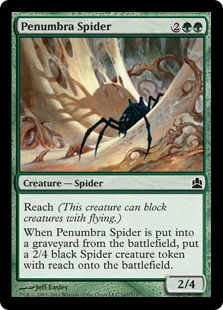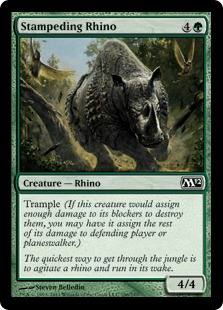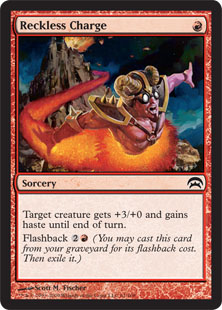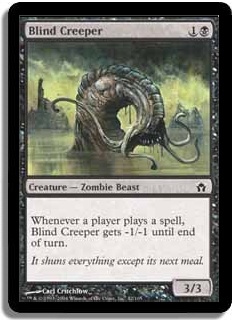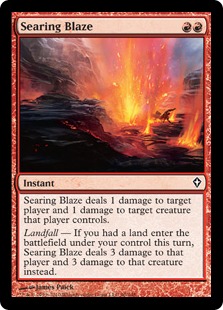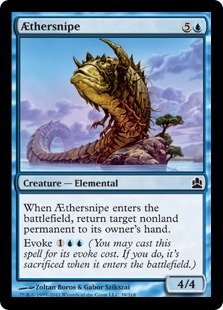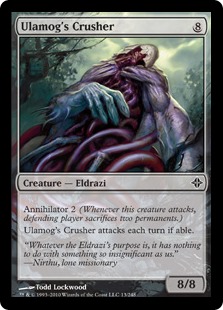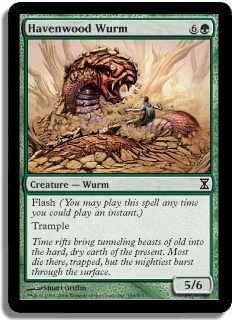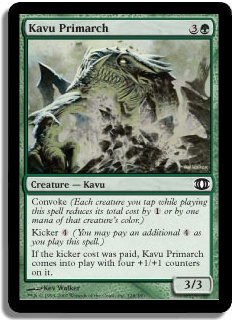I recently built a mostly common and uncommon MTGO cube (with some non-broken rares included) for the Limited Resources MTGO clan. This isn’t the first non-rare cube that I’ve built as I’ve had a common cube for a while; the purpose of this article is to talk about how having a non-rare cube in addition to your regular cube (as I assume most people reading this have cubes with rares allowed) can help you to become a better cube designer and can help bring some additional variety to your playgroup’s cube experience.
Before talking about how a non-rare cube can help you to become a better cube designer, there are a few things that I want to mention. You’ll notice in common cubes and common/uncommon cubes that effects such as mass removal, evasive creatures and big creatures are at a premium.
Mass removal is very hard to come by at common with cards like Crypt Rats, Pestilence and Evincar’s Justice being very strong in the format because they’re the only options for mass removal aside from cards like Martyr of Ashes in red. Red gets many more mass-removal options at the uncommon rarity with cards like Slice and Dice, Breath of Darigaaz and Sulfurous Blast coming in. This is very different from cubes with rares, where typically white has the most mass-removal effects (Wrath of God, Day of Judgment, Rout, Akroma’s Vengeance, Austere Command, Martial Coup, etc.).
Large evasive creatures such as dragons are usually rare and there aren’t many non-rares that are evasive creatures that reach dragon size (5+ power). Volcanic Dragon’s recent downgrade to uncommon rarity is very nice for common/uncommon cubes as there aren’t many red creatures that have stats like the hasty dragon and Phantasmal Dragon is an interesting card for common/uncommon cubes because the 5/5 size on a flier is huge in the format, although it comes with the liability of dying to a lot of things and giving you nothing in return if it dies to a Burst Lightning.
At common, there tends to be a higher concentration of creature strength at power less than 4 as there are a lot of strong, aggressive creatures at common. Creatures like Vampire Lacerator, Steppe Lynx, and Keldon Marauders are amazing at both the rare cube level and common cube level. Five mana is about where the power of common creatures generally tends to drift off and due to the high concentration of solid 1-4 mana creatures, common cubes tend to shift more towards creatures than cubes with rares or even common/uncommon cubes. It’s also difficult to find creatures with 4+ power at common, so ground-pounders with high toughness like Penumbra Spider, Stampeding Rhino and Blastoderm are very hard to kill in combat and since many of the “187” creatures (Nekrataal, Shriekmaw, Gatekeeper of Malakir) are uncommon, most of the cheap removal spells remain intact. Doom Blade, Lightning Bolt and Chain Lightning are all common and essentially all of the rest of the good spot removal comes in at uncommon (Path to Exile, Swords to Plowshares, Go For The Throat).
While the tools that drafters have available to them change, the fundamentals of cube drafting are still there; aggro decks still want to end the game ASAP by attacking with a lot of cheap creatures, and control decks still want to win through card advantage and a big finisher.
Now that we have that laid out, what does having a non-rare cube provide aside from a new draft environment?
I’ve found that rares encompass about one third of the slots in most cubes that allow for rares and because of that free space, it allows you to run cards that you don’t have room for in your main cube. When I wasn’t running the bouncelands in my cube (not due to them being too good, but due to me not having room for them), one of the things that I liked about building a common cube and drafting it was that I was going to use all 10 of the bouncelands and it was nice to be able to use those cards again. Granted, I ended up cutting a good chunk of the signets, but it’s always nice to be able to use cards that you aren’t able to use in your main cube. But that’s easy.
Non-rare cubes can also help general card evaluation by providing an environment where you can try cards out that you are hesitant to try out in your main cube. This is done so that you can transfer that knowledge to your regular cube experience.
Reckless Charge, Blind Creeper and Searing Blaze are some examples of cards that I’ve tried in my commons cube to success that I’m giving a test drive in my regular cube because they’ve performed well in my common cube.
All of these cards were in my on-deck binder at some time, but they didn’t make the final cut in my cube because I thought that their respective drawbacks were too strong. I was worried about Blind Creeper shrinking mid-combat, causing a blowout, that Searing Blaze wouldn’t find relevant targets, and that Reckless Charge would just have the hasty creature die to a bolt or Doom Blade. My experience in my common cube was that my perception was wrong about the relevance of the drawback on those cards.
Of course, as I said before, non-rare cubes have some different contexts of evaluation from rare cubes and for a card like Searing Blaze that preys on small creatures combined with the lower power level, one may think, “Well, it’s fine that Searing Blaze is great in your common cube, but who cares? It’s probably terrible in a rare cube.” It’s true that there are more creatures to kill with Searing Blaze in common cubes, and the creatures in the format are generally smaller, but dismissing the knowledge gained about Searing Blaze based on the different environments is throwing the baby out with the bathwater.
While the top end of creatures in rare cubes is higher, many decks in cube play with creatures that die to a Landfall powered Searing Blaze, especially the many creatures with 2 or less toughness that either have enters the battlefield triggers (Man-o’-War, Shriekmaw), have a powerful ability when they tap/attack (Looter il-Kor, Grim Lavamancer), or are just efficient aggressive creatures (Goblin Guide, Bloodghast).
The knowledge that I gained about Searing Blaze in the common cube format, therefore, wasn’t rendered useless or irrelevant from the different context of a rare cube as all of the factors needed to make Searing Blaze solid in either format were constant (and I can personally say that I’ve never lamented having Searing Blaze in my hand when playing a red cube deck, but that’s not the only reason that it’s still in my cube). I’ve similarly found that Reckless Charge gave my red aggressive decks some nice reach and ability to deal a lot of damage out of nowhere and that Blind Creeper almost always attacked as a 3/3, unless I had to cast something pre-combat (which didn’t happen). Both are examples of knowledge gained that transferred from my common cube to my regular cube because their factors to success remained constant in both cubes. This is much different from something like Pestilence or Evincar’s Justice, two cards that are extremely high picks in commons cubes. The vastly improved Wrath of God effects offered at the rare level make it so that the knowledge gained from using those cards isn’t as applicable, as the context changed a lot (whereas it didn’t as much with something like Reckless Charge or Searing Blaze).
Having a non-rare cube can also allow your drafters to draft other archetypes than they usually do, giving them a chance to think outside of the box and hopefully, they can learn lessons that can be applied to their regular cube drafting experience. When I had one of my first drafts with my common cube, a friend who typically plays with Islands in just about every format known to man played a B/R aggro deck successfully and he became more open to drafting aggressive decks in my regular cube.
A non-rare cube also is an environment to evaluate the effect of overall changes and addressing problems in a format. I had implemented the guild system for my regular cube, but I wanted to see if the theory of the guild system itself was a sound principle and not just a function of the mana fixers and multicolor cards available for my cube, so I tried it in my common cube. It was mostly the same cards added but a few guilds got a few fixers that it didn’t before due to power level. B/W got Orzhov Basilica and Orzhov Signet in my common cube where it didn’t in my regular cube. I found that even though the cards themselves changed, the guild system itself performed well in my common cube also. It allowed me to critically evaluate that it was a useful and sound theory for cubes, and not just a 450-card powered cube, but for all cubes. I was confident to recommend it to other cubes.
Using a non-rare cube can also teach you some lessons in balancing archetypes in an environment where you may not be as averse to cutting cards as you would be in your regular cube. For example, in my common cube, I found that due to the nature of the format’s big-mana creatures, there weren’t that many incentives to ‘go big’ with the big creatures in the format like Aethersnipe and Ulamog’s Crusher falling victim to the arguably cliche “dying to Doom Blade” test. It was a stark contrast to rare finishers like Consecrated Sphinx, Myr Battlesphere, and Sundering Titan. Because of the lack of incentives to ‘go big’, not many people did. Granted, this isn’t always the case in common cubes, as the first common cube I drafted had weakly supported aggro strategies, to where playing aggro was a way to quickly end up in the 1-2 or 0-3 bracket.
It made me revisit the fundamentals of cube design and to understand that although my intentions were that going big was a strategy, going fast was a better one and I needed to apply the same theories that I’ve applied to supporting aggro strategies in my regular cube. This meant I needed to be supporting control strategies by providing tools to support control strategies, primarily by adding more defensive spells like Totem-Guide Hartebeest, Devoted Druid, Havenwood Wurm, and Kavu Primarch and increasing the cost of my mana curve.
Another example is the old common pitfall of cubes where people could just algorithmically draft mana fixers and worry about taking actual cards later on in the draft. If the person realized that it was a problem in their regular cube, but saw that it wasn’t a winning strategy in their non-rare cube, that person could say that it’s just because the fixers aren’t as good (Borderposts are no dual lands). But that person would probably be missing the point, since it isn’t just that the fixing is worse, it’s that the aggressive strategies which prey on those decks and the abundance of mana fixing is the bigger problem and more important to mitigating the dominance of that strategy.
In other words, having a non-rare cube gives insight into HOW problems are solved in an environment where you can do things that you may not necessarily want to in your regular cube.
There are some costs to creating and making a non-rare cube, such as time of making it and getting cards and sleeves for your cards, but the opportunity cost of playing it may be another factor for some people. If you have limited time to cube or don’t have a regular playgroup to cube with, your non-rare cube will likely end up on the back burner. I can say from personal experience that since I’ve had little time to cube lately due to time constraints, I’ve had little time to play with my common cube as when it came down to cube drafting, I preferred to draft my regular cube, much to my chagrin. If you have a playgroup that is able to cube consistently, then it’s a much less relevant factor, but if your cube time is at a premium, you’ll have to be aware that you’ll either have to either carefully balance the time that your cubes get drafted, or one is going to be getting much less love than the other.Â
I hope this article has given you some insight on how having another cube in your arsenal can make you a better cube designer, or at least, can give you another environment to explore and draft.
May all of your opening packs contain Sol Rings!
@UsmanTheRad on Twitter
My blog featuring my (powered and pauper) cube lists:Â http://idratherbecubing.wordpress.com
Cube podcast that I and Anthony Avitollo co-host:  The Third Power

